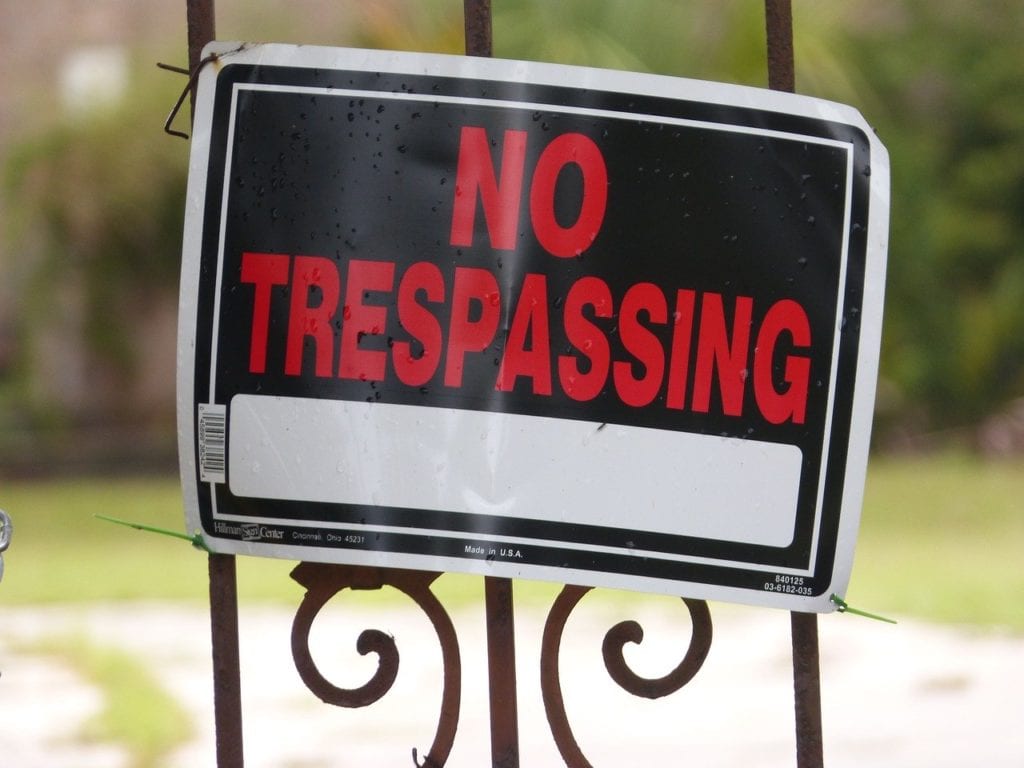We have all seen “No Trespassing” signs and have heard of nuisance, but what is the difference between the two?
Trespass
In California, there are two types of trespass: criminal and civil.
Pursuant to Penal Code section 602.5, criminal trespass is a misdemeanor that prohibits a person from entering someone else’s property without permission or the right to do so. Penalties include jail time and/or fines.
A civil trespass is distinct from criminal trespass and is defined as a person’s intentional or negligent unauthorized invasion of another person’s real property. A civil action for trespass does not require that one own the land; the right to possess is sufficient. The slightest infringement is enough to support an action for trespass. In an action for civil trespass, a property owner or tenant may recover for compensatory or punitive damages, including, but not limited to, the loss of market value, emotional distress, and/or the cost of restoration.
In California, civil trespass also includes the invasion of privacy. Pursuant to Civil Code section 1708.8, a person could be liable for invasion of privacy if that person knowingly intrudes onto the property of another, regardless of whether there is a physical trespass, without permission to capture an image, sound recording, or other physical impression.
Nuisance
In California, there are two types of nuisances: private and public.
California Civil Code section 3479 defines nuisance as “[a]nything which is injurious to health, including, but not limited to, the illegal sale of controlled substances, or is indecent or offensive to the senses, or an obstruction to the free use of property, so as to interfere with the comfortable enjoyment of life or property, or unlawfully obstructs the free passage or use, in the customary manner, of any navigable lake, or river, bay, stream, canal, or basin, or any public park, square, street, or highway…”
A private nuisance affects injury to the use and enjoyment of only one or a few property owners’ land. California law provides that any nuisance that is not a public nuisance is a private nuisance. Common types of private nuisance include bright lights, vibrations, loud music, and smoke.
A public nuisance affects a community or neighborhood and is likely to cause significant invasion of a public right. Common types of public nuisance include offensive fumes, illegal drug activity, pollution, and the hoarding of animals.
In an action for nuisance, an injured party may seek to abate or enjoin the nuisance and/or request money damages. Damages are calculated based on the decrease in property value due to the nuisance and values due for the loss of enjoyment or the property. In extreme cases, punitive damages may be recoverable if the nuisance was fraudulent, oppressive, and/or malicious.
